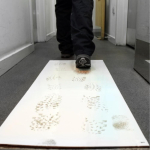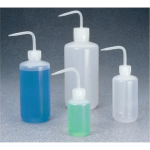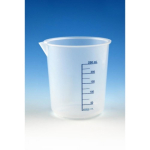Application
Use terminal transferase to add nucleotides to the 3?-OH ends of double- or single-stranded DNA fragments, for example:Tailing with dNTPs:Addition of homopolymeric tails to DNA fragmentsLabeling of double- and single-stranded DNA and oligonucleotides with either radioactive or chemically modified nucleotides (e.g., DIG-dUTP)3?-end Labeling with ddNTPs:Labeling of double- and single-stranded DNA and oligonucleotides with either radioactive or chemically modified dideoxynucleotides (e.g., DIG-ddUTP)
Features and Benefits
Incorporation of labeled or modified nucleotidesIn addition to standard nucleotides, terminal transferase wlll add radioactive or modified (e.g., digoxigenin-, biotin-, or fluorochrome-labeled) dNTPs or ddNTPs to DNA.
General description
Terminal Transferase catalyzes the template independent addition of deoxy- and dideoxynucleoside triphosphates to the 3′-OH ends of double and single-stranded DNA fragments, and oligonucleotides. Terminal Transferase incorporates digoxigenin-, biotin-, and fluorochrome-labeled deoxy- and dideoxynucleoside triphosphates as well as radioactively labeled deoxy- and dideoxynucleoside triphosphates. The supplied 5x-concentrated reaction buffer allows the optimal tailing of all types of double-stranded DNA ends: blunt ended, with 3′ overhang, or with 5′ overhang. The highest incorporation rates are obtained with 3′ overhangs.
Other Notes
For general laboratory use. Double-stranded DNA may have either blunt-, 3′-protruding, or 5′-protruding ends. However, 3′-protruding ends lead to the highest incorporation rates.TdT requires an oligonucleotide of at least three bases as a primer, and single-stranded DNA is tailed more efficiently than double-stranded.
Packaging
1 kit containing 3 components
Preparation Note
Working solution: Standard Tailing reaction with radioactive nucleotidesPreparation of CoCl2 working solutionAdd in a sterile vial 10 µl double dist. water and 15 µl of the supplied 25 mM CoCl2 solution: Final concentration: 15 mMPreparation of radioactive labeling mixdATP and dTTP labeling mix: mix 1 Vol. of a 2.5 mM dATP or dTTP solution with 15 volumes of double-distilled water and 4 volumes of α-32P-dATP or α-32P-dTTP (800 Ci/mmol, approx. 30 TBq/mmol).dGTP and dCTP labeling mix: mix 1 volume of a 2 mM dGTP or dCTP solution with 15 volumes of double-distilled water and 4 volumes of α-32P-dGTP or α-32P-dCTP (800 Ci/mmol, approx. 30 TBq/mmol)
Principle
Oligonucleotides are enzymatically labeled at their 3′ end using terminal transferase by incorporation of a single digoxigenin-labeled dideoxyuridine-triphosphate. Another way to label oligonucleotides is the addition of a longer nucleotide tail. For the generation of tailed oligonucleotide probes, deoxynucleotides triphosphates are used in a template independent reaction.
Quality
Absence of 5′ and 3′ exonucleases, endonucleases, and nicking activities tested according to the current Quality Control procedures









